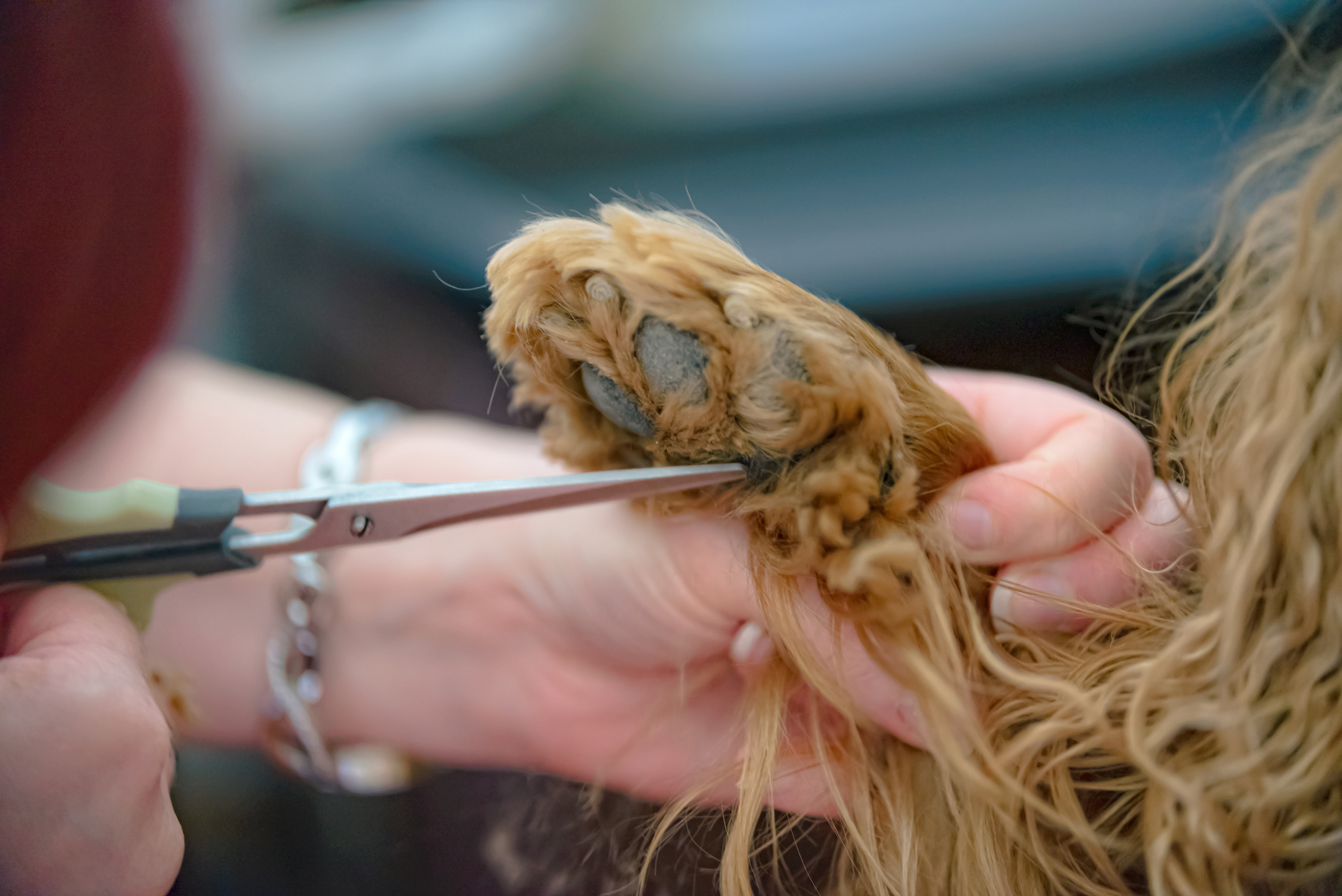
Why Grooming Your Pup's Paws Is So Important
Your dog’s paws are what give them freedom to run, jump, chase and play. They carry your pup over soft grass or carpet and rough pavement or gravel. Although your pup’s paws are strong and resilient, they still need frequent care.
Grooming your dog’s paws—from their nails to the pads themselves—ensures that your dog doesn’t experience any irritation or infections that could make it difficult for them to walk. If you’ve neglected paw grooming in the past, here are a few tips on how to do it properly and why it’s so important.
Nail trimming

A dog’s nails are very important. They provide extra grip when a dog is walking, and they help protect the paw pads from excessive wear and tear. However, they do need to be trimmed for a few reasons.
Long nails can be uncomfortable for dogs to walk on. Ideally, they will not touch the floor when your pup is standing, meaning they aren’t putting pressure on the nail. Excessively long nails can even grow around to the paw pad and puncture it, causing a painful wound and potentially paving the way for infection. Long toenails also have a higher chance of breaking. Depending on where the break occurs, this can be extremely painful for your pup.
The idea of clipping a dog’s nails sounds like a nightmare for a lot of pet parents. Many dogs squirm away and hate having their nails clipped by a professional, let alone their owners. However, this should not deter you from keeping your dog’s nails trimmed to an appropriate length.
Whether you trim your dog’s nails yourself or take them to the groomer’s, make sure the nails are trimmed back to an appropriate length every week or two. Avoid cutting them too short, or you could cut the quick—a portion of the nail that contains blood vessels.
Hair trimming
While most pet parents understand the importance of nail trimming, fewer know that it’s important to trim the hair around their dog’s paws. This is particularly important for dogs with medium and long hair, whose hair can be a hindrance on their feet.
The hair around your dog’s paws and in between their toes is susceptible to accumulating dirt and debris while your dog runs around. When this happens, the hair can begin to clump together and stick to the toes. As your dog walks around on these clumps, they might cause irritation and even wound the skin around their paw. If these areas aren’t cleaned or treated, they could become infected and make it painful for your pup to walk.
Additionally, long hair can slip under the paw pads and cause your dog to slip or lose their footing, increasing their risk for injuries.

To avoid these problems, the excess hair between and around your dog’s paws should be trimmed back and combed. This is likely easier done by a professional groomer, but your vet may be able to teach you how to do it at home.
Pad care
The pads of your dog’s feet may be the toughest part of their paws, but they are also the areas most sensitive to injury. These tough pieces of skin cushion the paws from impact and protect the bones underneath, but they are not indestructible. They can easily be punctured by thorns or nails, and they’re prone to burns, cracks and scrapes. Any paw pad injury has the potential to get infected and can hamper their movement.
The best way for you to care for your pooch’s paws is to be proactive about paw protection. During extreme weather like summer heat or winter snow and ice, boots or socks can protect your dog’s paw pads from burns and irritation. Additionally, check your home and backyard for sharp objects that could injure your dog before letting them run loose.
Keep your pet’s paw pads clean by washing them after your dog gets messy in mud, swims in the pool or touches other substances. You should also keep an eye out for pad dryness, which can cause uncomfortable cracks and even bleeding. Applying coconut oil or paw cream can keep the pads moisturized and comfortable.
Conduct routine checks
While it’s not reasonable to take your dog to a groomer every day to have their paws tended to, it is a good idea to check your dog’s paws once a day to look for signs of irritation or infection. Look for long nails, clumps of hair or debris between the toes, irritation, swelling and paw pad dryness or injuries. By getting into the habit of assessing your dog’s paws every day, you’ll know exactly when your dog needs a little extra paw care or when a trip to the vet might be necessary.


